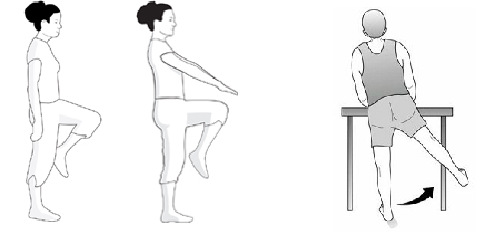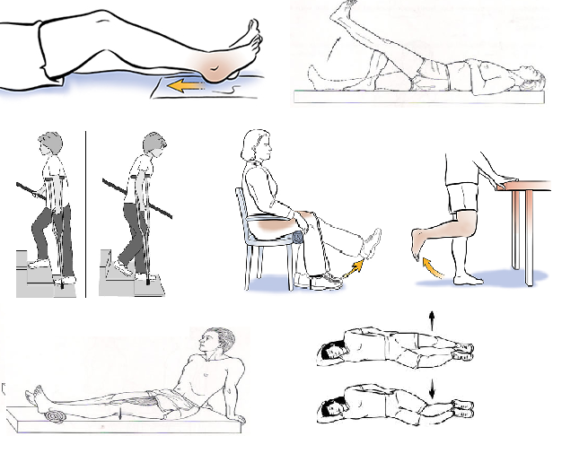Are you thinking about or going in for surgery to have a Hip or Knee Replacement?
Facing the prospect of a hip or knee replacement can definitely be a little daunting and you may have plenty of questions ranging from how can you prepare for it, how long is the recovery time and what to expect. Straight off the bat I’ll leave you with the point that most patients (87%) said that their post-surgery expectations were met, so that’s a plus?
Pre-habilitation:
We’ve all heard of rehabilitation, so what is pre-habilitation? Prehab is a proactive approach to avoiding pain and injury. It can be as simple as additional exercises or incorporating range of motion movements to ensure that an injury doesn’t occur. On the other hand, if you’ve already suffered an injury or are experiencing pain and surgery is on the horizon, there is a strong chance that your doctor has recommended prehabilitation. This refers to improving your functional capacity through increased physical activity before the anticipated surgery.
There have been studies to show that 4-6 weeks of prehab prior to surgery have been seen to accelerate the speed at which patients recover post-surgery. So we know exercise and prehabilitation is important, but what about other ways you can prepare yourself before surgery?
Other than exercise and mobility, there are a range of different things you can look at doing pre-surgery in an attempt to help speed up your recovery even faster.
Things to do pre surgery:
- Lose weight – seen to decrease post-surgery complications
- Quit smoking – nicotine can slow recovery
- Stretch – you will be given some to strengthen the area to speed up recovery afterwards
- Find a driver – you won’t be able to drive after surgery, so plan ahead
- Avoid blood thinners – you’ll be asked to stop taking them beforehand due to potential complications
- Start new medications before surgery – iron for example
- Bank your blood – in case you need some / possible transfusion
- Install railings to help you get down / up from seated position / out of bed etc.
So, you’ve had your surgery and the doctor has cleared you to leave. Now what?
Benefits of exercising once getting your new hip/knee
- Decreasing stiffness
- Improve flexibility
- Improve muscle strength
- Preventing blood clots
In terms of exercise I have outlined a couple of the main ones below that you will most likely receive from your doctor (and if not they are all very beneficial). It’s best to exercise 2-3 times daily although this will depend on how you’re feeling, these small movements could potentially feel like you’re moving mountains, but that’s OK. Start with small movements to begin with and work your way up, any movement at all is better than being sedentary.
Straight after surgery: Hip Replacement
 Ankle pumps Heel slides
Ankle pumps Heel slides
3 weeks post surgery: Hip Replacement

Marching Standing Hip Abduction
3-6 weeks post surgery: Hip Replacement

Glute bridge Resisted hip extension
Post surgery exercises: Knee Replacement

Heel slides, straight leg raises, stair walking (assisted with walking stick or equivalent). sitting knee bend, standing knee bend, knee push downs, clams.
Precautions post-surgery:
DO NOT
- Sit on a low chair / couch
- Cross your legs
- Sleep on your side without a pillow between your knees (first 6 weeks)
- Twist your legs to extremes either way
- Be sedentary and inactive – do your best to move and get the joint moving
Other things to note:
- Swelling: As you would have just undergone serious surgery, you may experience swelling after exercise or activity. You can relieve this by elevating your leg and applying ice wrapped in a towel – Remember: this is very normal and shouldn’t deter you from exercise.
- Discomfort: Pain is a very individual experience, some discomfort after major surgery is unavoidable although there are measures that can be taken to ensure you are as comfortable as possible.
- Blood Clots: Blood clots can be common after surgery, although medications, early mobilisation and lower limb exercises can help avoid this completely.
- Hydrotherapy: While it may be very beneficial for you down the track and you should most definitely try incorporate it into your rehab plan, hydrotherapy or swimming in public pools should not be done until at least 6 weeks after the operation.
After reading all of this, just remember that the most essential part to recovery post-surgery is your attitude. By making time – recovery will be much quicker. Having hips or knees replaced is the first step to becoming pain free after what could have been a long time of dealing with arthritis related pain. If you have any questions or problems always look to consult a health professional, such as the Exercise Physiologist’s here at Niche as we are always willing to help and make you feel as confident and comfortable as possible.
References:
Exercise reduces risk of total hip replacement. (2013). Nature Reviews Rheumatology, 10(1), pp.2-2.
Gilbey, H., Ackland, T., Wang, A. and Tapper, J. (1999). ACCELERATED REHABILITATION FOLLOWING TOTAL HIP REPLACEMENT: THE ROLE OF PREOPERATIVE EXERCISE. Medicine & Science in Sports & Exercise, 31(Supplement), p.S262.
Lifegen.net. (2018). 6 Exercises to Keep Seniors Active After a Hip Replacement – Lifegen. [online] Available at: https://lifegen.net:8080/blog/6-exercises-to-keep-seniors-active-after-a-hip-replacement/index.html
OTTO, M. (2011). Rigorous Exercise May Delay Hip Replacement. Internal Medicine News, 44(17), p.17.
Topp, R., Swank, A., Quesada, P., Nyland, J. and Malkani, A. (2009). The Effect of Prehabilitation Exercise on Strength and Functioning After Total Knee Arthroplasty. PM&R, 1(8), pp.729-735.
What is pre-habilitation?. Exercise Right. Available at: http://exerciseright.com.au/what-is-pre-habilitation/.